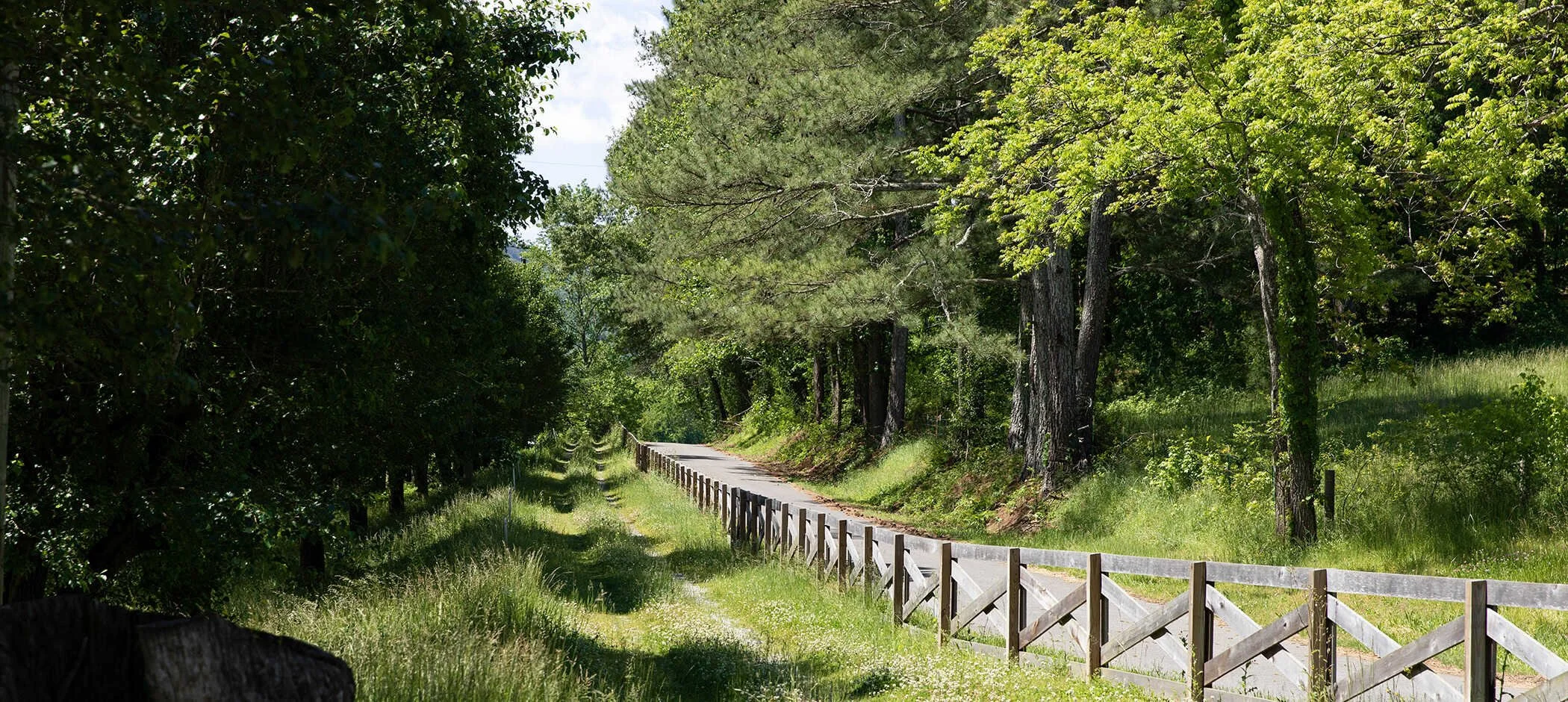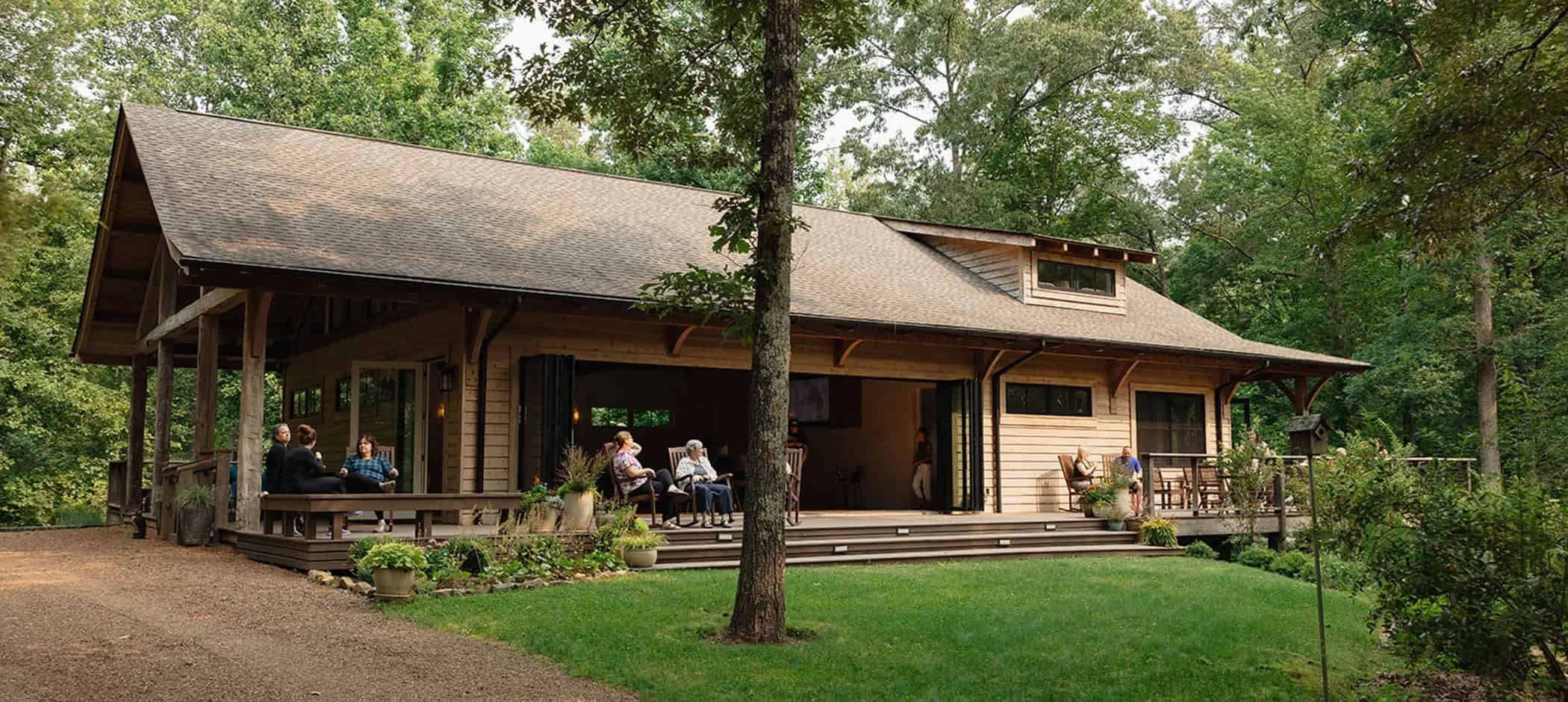Reconnect with Nature at Rising Fawn Gardens
A peaceful retreat house nestled in the beauty of Lookout Mountain - your perfect setting for a transformative, one-day retreat experience.
Welcome to Rising Fawn Gardens
Located in the heart of Rising Fawn, Georgia, Rising Fawn Gardens offers a serene and inspiring environment to reconnect with yourself and nature. With over 600 acres of stunning landscapes, including gardens, trails, an ever-flowing creek and panoramic views of Lookout Mountain, we offer the perfect environment to host your next retreat or workshop.

Where Nature and Community Thrive Together
We are Dedicated
To protecting and honoring the land, creating a space where nature is not just a backdrop but an integral part of the experience. Surrounded by the stunning views of Lookout Mountain, our property is a sanctuary for native ecosystems, and the local community.
We farm the land responsibly, nurturing it to preserve its beauty and biodiversity, ensuring that it remains a vibrant and sustainable home for generations to come.
Our Commitment
To the land also makes Rising Fawn Gardens an ideal gathering place for anyone who puts the outdoors at the center of their work and hosts workshops and one-day retreats in nature.
As you attend or host an event here, you’ll have the opportunity to explore the rich natural surroundings, connect with the land, and appreciate the diverse ecosystems that make our space so unique and special.
For More Information Visit

The Perfect Location for Your One-Day Retreat
At Rising Fawn Gardens
We provide the ideal space for your one-day retreats. Our Retreat House is designed to host small, intimate gatherings and offers a peaceful, nature-infused setting that fosters connection, healing, and reflection.
Enjoy the Captivating Atmosphere
Whether you’re planning a yoga retreat, business workshop, or mindfulness session, our venue provides the perfect atmosphere for your event.
For More Information Visit
Thoughts From Our Clients

Ready to Create Your Unforgettable Retreat?
We are looking forward to welcoming you to a space where nature and connection come together. Start planning your one-day retreat or workshop today and let us help you craft the perfect experience.






